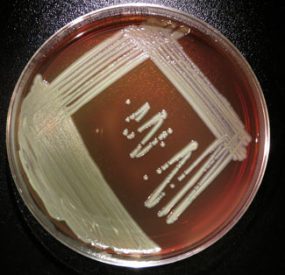Key points
- Elizabethkingia bacteria are found worldwide in water sources but rarely make people sick.
- When they do infect people, they can cause serious illness and sometimes death.
- Those at highest risk are the very young or those with weakened immune systems.
- Elizabethkingia inection is often resistant to antibiotics.

Overview
Elizabethkingia is a family of bacteria found worldwide in the environment (soil, river water and water sources like plumbing and drains). Despite how common the bacteria are, they usually don't make people sick.
In the United States, about 5-10 cases per state are reported each year. This averages to 250-500 infections nationally per year. Most infections occur in small outbreaks in health care facilities in people who have pre-existing health conditions.
The illness can kill between one-third and half of patients who get it. This is likely due to two factors; one is that Elizabethkingia can be a severe infection. The other is that most people with Elizabethkingia are already medically fragile before they get Elizabethkingia.
Signs and symptoms
Elizabethkingia signs and symptoms of illness vary. The most common symptom is blood infections without an obvious source. Meningitis (swelling of the brain and nervous system) is common. It is linked to high numbers of illnesses and deaths in children who get sick with the disease.
It can also cause:
- Pneumonia and/or bronchitis (lung or airway infections)
- Swelling of the heart (endocarditis)
- Skin and soft tissue infection
- Urinary tract infections
- Bone infections
- Bloodstream infections
- Infections at surgery sites
Who's affected
Healthy people are rarely affected by Elizabethkingia.
Those at highest risk for infections are:
- Babies born before 37 weeks gestation
- Those with weakened immune systems
- People in critical care units in healthcare facilities.
Testing
Testing is done by culture (growing the bacteria in blood samples in the lab). CDC provides testing to determine the type of Elizabethkingia bacteria a person may be infected with.
CDC can also assess if an illness is part of an outbreak, either in the community or a healthcare facility. This can help healthcare providers be on the lookout for additional cases and respond if other people get ill.
Treatment and recovery
Elizabethkingia bacteria are naturally resistant to many commonly used antibiotics.
Healthcare providers can send samples to CDC for Elizabethkingia testing to determine which antibiotics may be most effective.
Between one-third and half of patients recover from Elizabethkingia infection.
